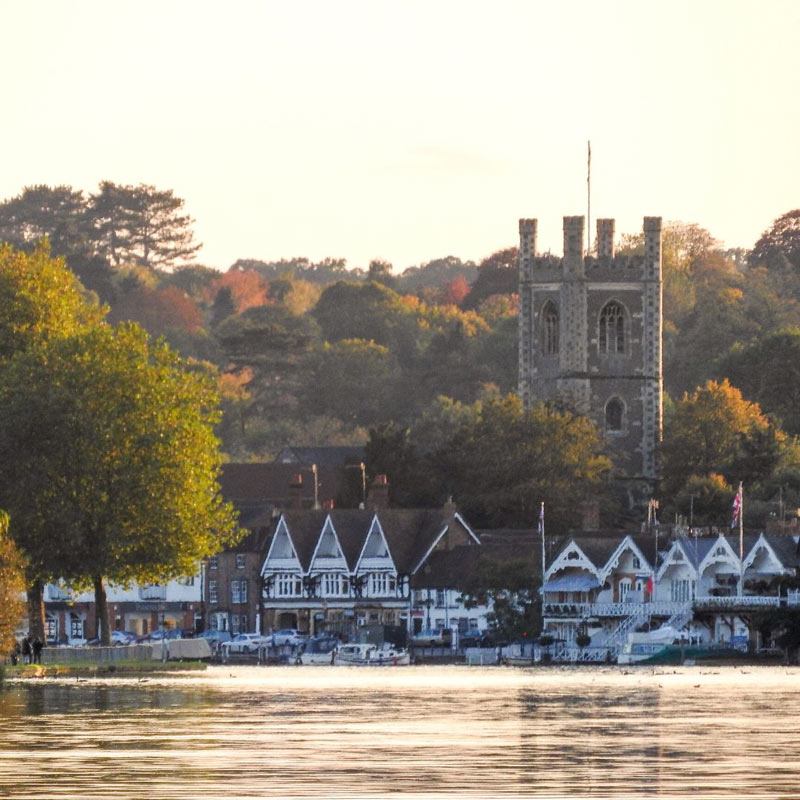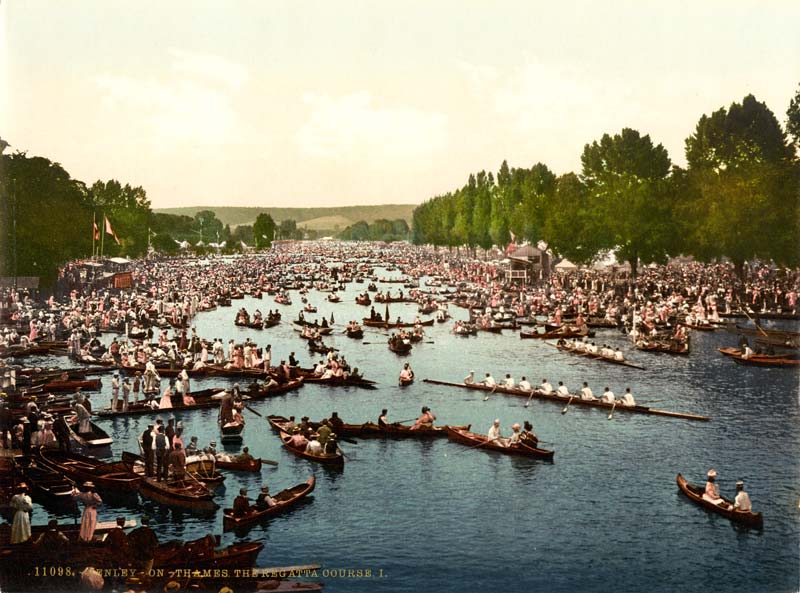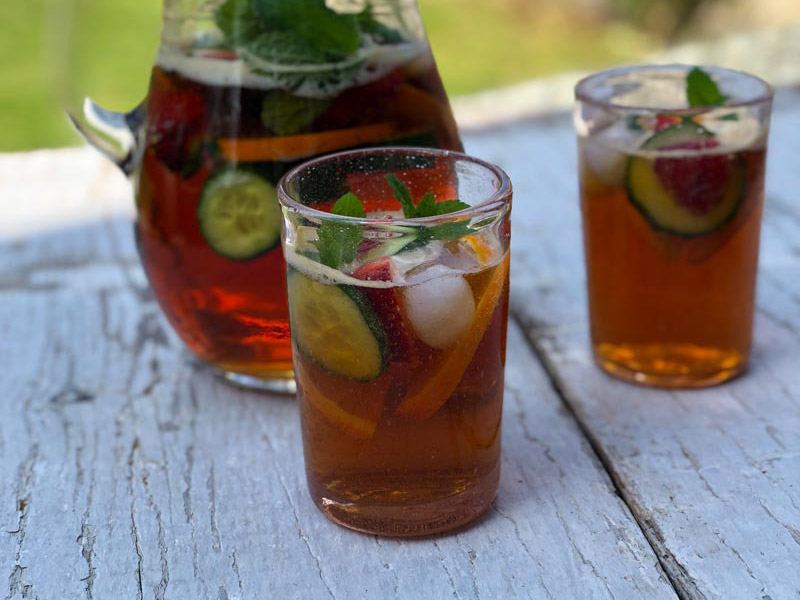I threw a picnic in our garden the other day. We were busy with all…
The Henley Royal Regatta
One of the most English events is the Henley Royal Regatta, which is held on the 27th week every year in the picturesque town of Henley-on-Thames. Just like Royal Ascot, the Henley Royal Regatta was also part of the London Season – the English social season, when members of the country’s elite gathered at different events. However, the “crème da la crème” of England did not visit the Regatta because they were so interested in the rowing and wanted to see it. No! They wanted to be seen!
I have not yet managed to attend the Regatta, but last year I did have the chance to visit the Henley Music Festival. I must say, it was a fantastic experience. The fact that you have to dress up because of the dress code already creates a special ambience, (Gentlemen in Tuxedos and Ladies in Evening and Cocktail dresses). The colourful, buzzing event is very well organised and it is brilliant how old rules, tradition, entertainment survive in modern days. But let’s see how the regatta was born.
First of all, what does regatta mean?
The word ‘regatta’ comes from Italian and it means ‘rowing match of gondolas’. As I have already mentioned in this post (link), rowing is an old sport on the Thames and Henley accommodated the Boat Race between the universities of Cambridge and Oxford before the first regatta.
This made the leaders of the town think about setting up their own regatta to be held annually. The first regatta was held in 1839. Due to its success, the following year the event was extended to two days, in 1866 to three days. In 1906 it became a four day event and since 1986 it lasts 5 days. Only the two world wars and recently the corona virus stopped the regatta.
The quiet retreat for artists and anglers, the quaint riverside town of Henley changed. But it was not only the regatta to be blamed for it. The opening of the Henley branch line in 1857 brought new prosperity and many changes to the town. The Great Western Railway offered cheap day returns for fishing excursions and first class travel for wealthy residents and visitors. The regatta, the tranquillity of the rural Thames and boat trips became fashionable and attracted more and more visitors. Henley became a buzzing place and many of the riverside hotels and smaller terrace houses were built during this period.
The event got its Royal title in 1851 when Queen Victoria’s beloved husband, Prince Albert visited the regatta. But he was not the only royal to visit it,: many of the royal family, including the Prince of Wales, the later King Edward VII and Princess Alexandra. Edward VII certainly made it even more fashionable, so much so that in 1906,17 thousands people arrived to Henley within a day!

Why in Henley?
The stretch of the river north from Henley Bridge is the longest naturally straight stretch of river in Britain, almost 1 mile (1.6km) long, hence perfect for rowing races. On the downstream side of the bridge, in Berkshire is the social headquarters of the regatta, the world’s oldest rowing club, Leander Club founded in London, 1818. Leander Club colours were originally red but were altered to the now famous pink, to distinguish them from Marlow Rowing Club’s red.
Why is Henley Regatta unique?
The races are organised in knockout draws with only two boats racing the course in each heat. As many as 100 races, each taking approximately seven minutes take place on each day. There are sixteen separate trophies to be awarded, the most prestigious being the Grand Challenge Cup.
How did a day look like in the Victorian and Edwardian times?
Guests and visitors would mainly arrive in Henley by train, where everyone would chose an entertainment according to their wallets. High society would have luncheon in white tents along the riverside, lower classes would enjoy a picnic by the river. The aristocracy would attend the races in the Steward’s Enclosure (similar to the Royal Enclosure at Ascot), others would watch the races from the riverbanks. The town would be heaving, bands would play music on the bandstand…
The riverside hotels and houseboats would be fully booked by illustrious guests, where the terraces would be lit by lights and Chinese lamps in the evening and live music would entertain the guests. Going for a boat trip was fashionable, which might have not been as simple as it sounds… The river was crowded by hundreds of boats – something which today appears not to be enjoyable really… There were other sport events during the regatta providing entertainment: water jousting, walking the greasy pole and dongola racing. Water jousting was between two people armed with mops, standing on the tills of separate punts. Each man tried to push the other to the water. Laughter and entertainment was guaranteed.



The dress code
Everyone dressed up for the regatta, especially members of the high society. Just like for Royal Ascot, aristocrats spent a fortune on their attire at fashionable designers. Ladies wore elegant dresses and hats, gentlemen wore blazers with flannels and boaters.
The tradition survives today: ladies must wear a dress or a skirt with a hemline under the knee. Trousers or culottes are not allowed. Hats are not mandatory, but everybody is encouraged to wear one to keep this lovely tradition alive. Gents have to wear long trousers and blazers, ties or cravat and a hat. Shorts or jeans are not allowed.

Not only the tradition of the dress code survived…
Although there are several stands offering food and drinks at the event, it is tradition to have a picnic before going to the venue. People have a picnic by the car sitting in folding chairs. Then they head off to the venue and most probably order a drink which cannot be anything else than the famous:
Pimm’s
Pimm’s is not only consumed at the Henley Regatta. It is one of the two staple drinks at the Wimbledon tennis tournament and the Chelsea Flower Show as well. Basically, it is a carbonated lemonade with various chopped garnishes, particularly apples, cucumber, oranges, lemons, strawberry and mint. Pimm’s can also be mixed with Champagne (or a sparkling white wine), called a “Pimm’s Royal Cup”. The drink was first made in London in 1823 by an oyster bar owner, James Pimm. He offered the tonic (a gin-based drink containing a secret mixture of herbs and liqueurs) as an aid to digestion. Apparently, it tasted subtly of spice and citrus fruit.

~
The Thames Valley is home to many English traditions and is full of history and heritage. The Henley Royal Regatta is one of them. Why not come and join me for a Pimms and a tour of the Thames Valley?




Comments (0)